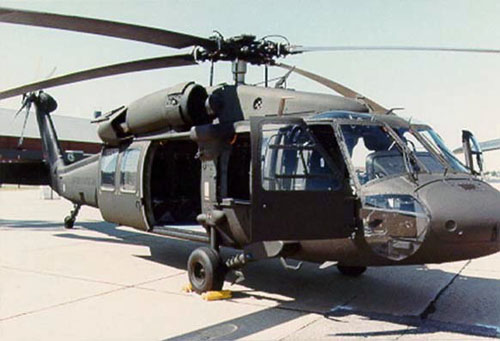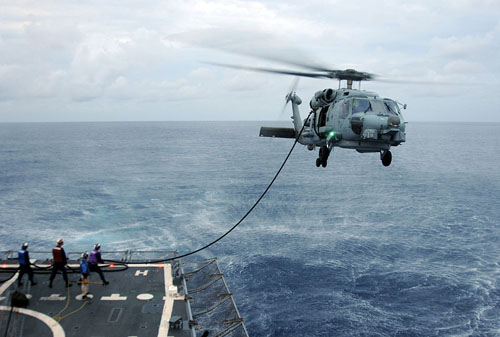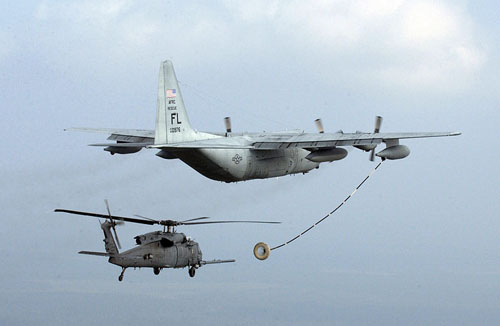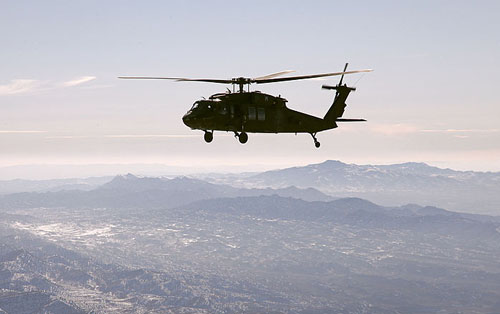In 1972, the Army put out a call for a Utility Tactical Transport System, or UTTAS, helicopter. After its experiences in the Vietnam War, the Army was looking for a machine that was better able to operate under fire than the Huey.
The Sikorsky S-70 was the answer to the Army’s request. It came with an armored cockpit, self-sealing fuel tanks, and a cabin box and landing gear that could absorb severe shocks.
The S-70 has a four-blade rotor, two engines, and several redundant operating systems that can keep the helicopter in the air even after suffering damage.
During the invasion of Grenada, the helicopter proved that it could operate even after suffering significant damage.
Related Article – 14 Taxiway Markings, Signs, and Lights Explained By An Actual Pilot
The S-70 differed most noticeably in look from the Huey. The Army required the helicopter to be able to fit into a C-130 Hercules cargo plane with its rotors in place. Because of the plane’s low ceiling, the helicopter had to be long and low-set.

The S-70, or UH-60A, was replaced in 1989by the UH-60L, which had a more powerful engine and stronger outside cargo hooks. But both models could carry 11 fully equipped soldiers, in addition to a 3-person crew.
The S-70 is 64.8 feet, or 19.8 meters long, and 16.8 feet, or 5.1 meters, high. It weighs 10,649 pounds, or 4,830 kilograms, without cargo or crew. It can travel at a maximum speed of 182 miles, or 293 kilometers, per hour and can reach a height of 19,300 feet, or 5,883 meters.
During the Persian Gulf War in the early 1990s, almost half of the Army’s Black Hawk helicopters saw action, and only two were lost. During the Army’s mission in Somalia, however, it became clear that Black Hawks were vulnerable to rocket-propelled grenades.

In 1983, the SH-60B Seahawk began serving as the Navy’s search-and-rescue and anti-submarine helicopter. The SH-60F, which was equipped with a dipping sonar, replaced the Sea King in the mid-1980s.
Related Article – 5 Best Low Time Pilot Jobs With 250 Hours
The U.S. Coast Guard began using the HH-60J Jayhawk for search-and-rescue operations. The model comes equipped with several radars and a Forward Looking Infrared (FLIR) turret for night operations.
The U.S. Air Force uses the MH-60G Pave Hawk for special operations and the HH-60G for rescue missions.

Sikorsky has signed contracts with militaries around the world, so various models of the S-70 are in use worldwide.
Because the Black Hawk helicopter is more expensive and more complicated to operate than the Huey, making it unsuitable for widespread civilian use. But it is clearly the preferred helicopter of the U.S. military.
Overall, more than, 2,400 S-70 helicopters are used for search-and-rescue missions, troop transport, maritime surveillance, and other support roles, making it the most popular U.S. military helicopter of the last 20 years.
Related Article – Instrument Proficiency Check (IPC): 4 Things You Need To Know

